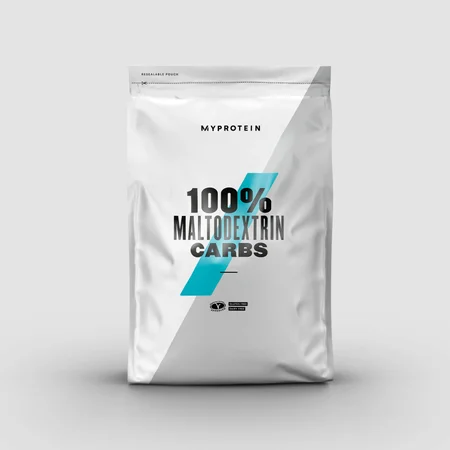
What Is Maltodextrin?
Maltodextrin is a complex carbohydrate found on the ingredients list of many store-bought foods, but there’s a good chance you either haven’t noticed it or that you don’t know what it is.
At a glance, it is a food additive that also serves as a great source of energy for athletes in need of a quick hit of carbs.
So what is it, and is it good for your health?
What Is Maltodextrin Made From?
Maltodextrin is made from corn, potato starch, rice, and sometimes wheat. Its production consists of cooking the aforementioned starches before adding acid and sometimes enzymes, for example, bacterial alpha-amylase, which helps to break it down.
The difference between maltodextrin and corn syrup solids also comes from how they are made. Both are put through the process of hydrolysis, which is a chemical process that involves adding water to help to further break them down. The difference is, after hydrolysis, maltodextrin is less than 20 percent sugar, while corn syrup solids are at least 20 percent sugar.
What Is Maltodextrin Used For?
It often features in processed food as a kind of thickener that increases the volume of the processed food. Because it is cheap to make and so easily produced it is often combined with artificial sweeteners in desserts and powdered drinks. Sometimes it is even used in hair and skin care products.
Hardgainers, this one is for you. For athletes and bodybuilders, maltodextrin can be a top source of fast calories and energy. It is often found in sports drinks designed to help sportsmen gain weight.
For people living with hypoglycaemia, maltodextrin is often prescribed as a part of regular treatment due to its ability to quickly increase a subject’s blood sugar levels, meaning that if they struggle to maintain normal blood sugar levels it can be a quick fix solution.
Maltodextrin vs. Dextrose
Maltodextrin and dextrose are sugar supplements that are available in powder form that are easily added to, and often already found in many mass building and recovery shakes. Both make carbs readily available to you after and during a workout.
Essentially they are the same in many ways. Dextrose is a simpler form of sugar that your body doesn’t need to break down, while maltodextrin features a string of glucose molecules, which can be easily broken down, but not quite as quickly as dextrose.
Uses & Benefits Of Maltodextrin
Maltodextrin In Food
Maltodextrin is approved by the US Food and Drug Administration on the list of ‘Generally Recognized as Safe’ substances. By ingesting easily digested carbs after a brutal workout – especially one geared to develop mass muscle – you will do your body justice in helping it to recover. This will also help your body to build muscle more effectively by stimulating a release of insulin, which helps nutrients get where you want them to go in your body. It also means that you can get back training sooner.
Maltodextrin is a highly processed white powder substance that is similar to corn syrup solids. It is absorbed directly into your guts, raising blood sugar and insulin levels. You probably know already that many processed foods are made in a way that gives them a longer shelf life. Well, maltodextrin is the reason for that, too.
Maltodextrin Nutrition
It has around four calories per gram, rivalling the average table sugar. Maltodextrin’s GI ranges from 106 to 136, making it higher than table sugar. GI is a substance’s glycaemic index, which is a figure that states the ability of a carb to increase the level of glucose in your blood. Your body can digest maltodextrin quickly, which makes it a highly effective and readily available quick boost of energy and calories when it’s required.
For anyone concerned about fat and cholesterol, it is believed that because of its zero content, maltodextrin does not lead to fat gains. It also does not feature sodium, potassium, protein, calcium, iron or vitamins.
Take Home Message
Maltodextrin is a white powder with no sweetness that is used as a food additive, often in processed foods and in sports drinks. It is beneficial to anyone taking on rigorous endurance or muscle building exercise as it provides a quickly absorbed intake of carbs, which contribute to the recovery of your normal muscle function. This can help ward off the effects of muscle fatigue, but also can help with muscle growth following a workout.

Alice Pearson is a UKVRN Registered Associate Nutritionist and UK Anti‐Doping accredited advisor, having obtained a Bachelor’s of Science in Nutrition and a Master’s of Science in Sport Nutrition. She has a specialist interest in the use of sports supplements for improving health, fitness, and sport performance. Alice has experience working with both amateur and elite athletes, including providing nutritional support to Tranmere Rovers FC and Newcastle Falcons Rugby Club. Her nutritional guidance is always supported by evidence‐based research, which she keeps up to date through continuing professional development and independent learning. In her spare time, Alice loves travelling, hitting the gym, and getting stuck into a good book. Find out more about Alice's story here.







